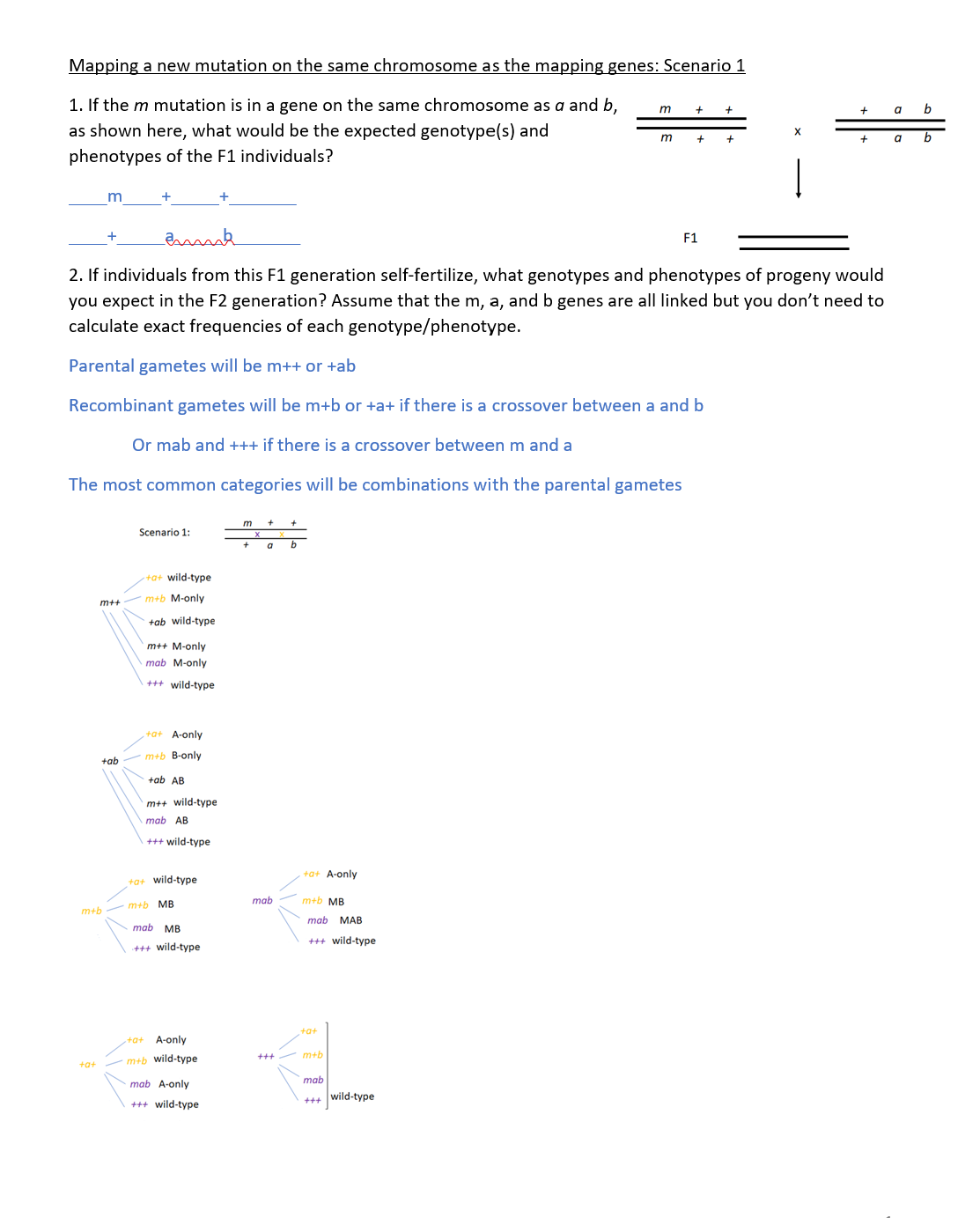2. If individuals from this F1 generation self-fertilize, what genotypes and phenotypes of progeny would you expect in the F2 generation? Assume that the m, a, and b genes are all linked but you don't need to calculate exact frequencies of each genotype/phenotype. Parental gametes will be m++ or +ab Recombinant gametes will be m+b or +a+ if there is a crossover between a and b Or mab and +++ if there is a crossover between m and a The most common categories will be combinations with the parental gametes m++ +a+ +ab m+b Scenario 1: +a+ wild-type m+b M-only +ab wild-type m++ M-only mab M-only +++ wild-type +a+ A-only m+b B-only +ab AB m++ wild-type mab AB +++ wild-type +a+ wild-type m+b MB mab MB +++ wild-type +a+ A-only m+b wild-type mab A-only +++ wild-type m + a mab +++ +a+ A-only m+b MB mab MAB +++ wild-type +a+ m+b mab +++ wild-type
Genetic Variation
Genetic variation refers to the variation in the genome sequences between individual organisms of a species. Individual differences or population differences can both be referred to as genetic variations. It is primarily caused by mutation, but other factors such as genetic drift and sexual reproduction also play a major role.
Quantitative Genetics
Quantitative genetics is the part of genetics that deals with the continuous trait, where the expression of various genes influences the phenotypes. Thus genes are expressed together to produce a trait with continuous variability. This is unlike the classical traits or qualitative traits, where each trait is controlled by the expression of a single or very few genes to produce a discontinuous variation.
Could you explain how question 2

Step by step
Solved in 2 steps with 1 images


